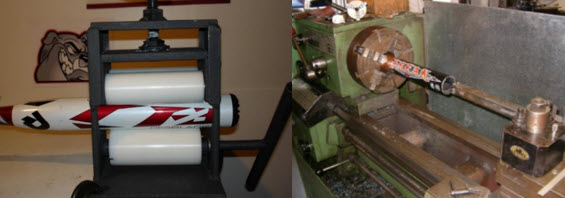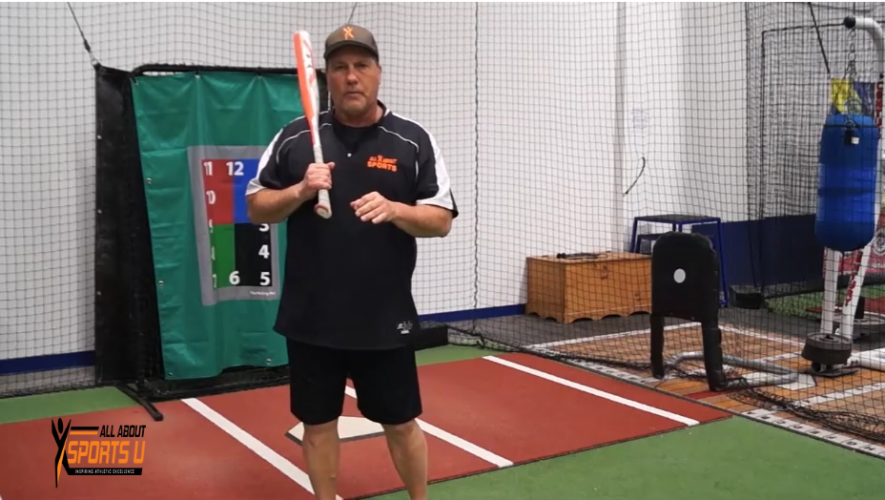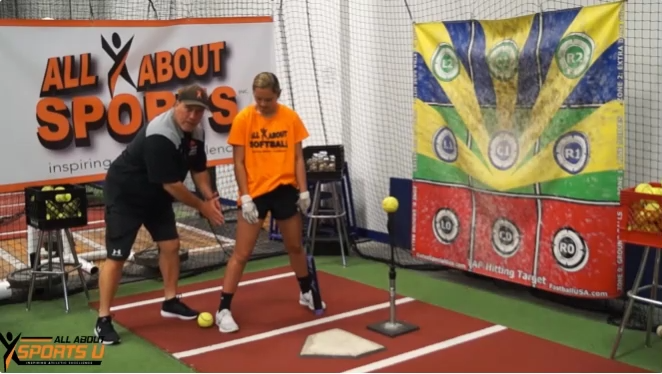3 L’ System to Successful Baserunning –
Improve Your Game and Avoid Common Mistakes
Baserunning is an essential aspect of softball that requires a combination of physical agility and strategic thinking. Good baserunning can make the difference between winning and losing a game. However, it is also one of the most challenging skills to master and can often lead to costly mistakes. In this blog post, we will explore the 3 L System of Baserunning that I created in the late ’90s, a system that teaches base runners how to be super aggressive on the bases by capitalizing on every little weakness or mistake their opponent makes. The 3 L’s system increases the baserunner’s IQ by utilizing their natural instincts with an “I Must Score Attitude, resulting in constant pressure on the defense and more offensive runs!!
Whether you’re a seasoned player or just starting, this system and the base running tips in this blog will help you avoid common mistakes and take your base running skills to an explosive level. From understanding the different types of starting positions and leads to perfecting your slides, this post has everything. Whether the batter-runner is going through the bag on an infield ground ball or circling a bag on a hit, the player should always Lock, Look and Listen!!
So let’s dive into the 3L’ System of baserunning and learn how to make every base count and get HOME!!
3 L’ System is Lock-Look and Listen
Let’s Break down Each L in the system
- Lock- means you stop at a point where you have circled the bag and now your feet are set in a wide position leaning towards the next base as the ball is being thrown into either the cut, base, or pitcher. In your lock position, you should never have a retreating posture leaning backward the stance needs to be like a cat ready to pounce on an opportunity!!!
- Look – your eyes are following the ball where ever it’s at looking for an opportunity to advance on maybe a short hop to the cut or an overthrown!!
- Listen to base coaches all the while you’re watching the ball in play. If you are asked or decide to go back to the bag you passed you should be in a ½ step motion always watching the ball and never turning your back on the ball!!
Now, Let’s Start with 5 basic steps on a ground ball in the Infield!!
Step 1. Once the ball is hit, a player should put her head down and run as hard as they can toward first base running through the bag!!
Step 2. Players should focus on the front part of the bag. That is where their foot should hit since it is the closest and safest spot to hit the bag when sprinting.
Step 3. After about 1 step past the bag the player should take a peek in foul territory to see if the ball went past the first baseman, if so try an advance to second base.
Step 4. After hitting the bag go 3 steps and begin to slow down with the chopping of the feet or reverse of the feet (see video) as quickly as possible.
Step 5. When coming back to 1st base, always turn to your right shoulder towards foul territory and come back, so the umpire never has the thought that you were thinking of going to second base. Now that the runner is on first, they should Lock, Look at your third base coach, and Listen to the first base and third base coach. Don’t turn your head towards the first base coach as the third base coach may need to get you and signal right away involving stealing, bunting, or possible and hit & run!!
How to properly round the bases
Unless it’s a stop and hold the bag from the base coach the runner should always Circle the Bag and Find the Ball that is still in play and should only return once the ball is in the pitcher’s glove in the circle
Whether you’re a batter-runner that hits the ball through the infield or a runner coming from a base looking to advance one or more bases you should always circle the bag by hitting the inside tip of the bag and then getting to an aggressive 3 L posture.
Let’s look at an Example. https://youtu.be/JCLFY4K3AUE
Let’s say the batter-runner hits a ball between the shortstop and third baseman a single out to the left field, the batter-runner should get wide coming out of the batter’s box by the 3rd or 4th step then step on the inside part of the bag heading towards 2nd base. Stopping about 15 to 20 feet out away from first base, they now Lock their feet wide leaning towards 2nd base in an aggressive posture, Looking at the left fielder throwing the ball either to the cut-off or the bag, while Listening to the first base coach!! Now the runner looks for a bad throw to the cut or base, maybe a bobbled ball on the reception or any mistake then instantly takes off for the next base getting into scoring position. This is how great base runners play the game, just like a cat stalking its prey they are Locked, Looking, and Listening to capitalize on any opportunity to advance and score!!
What’s common and what most base runners do is this; They circle the bag rounding towards 2nd base and before the ball is thrown or as it’s being thrown in towards the infield, they turn their back to the ball and quickly retreat back to first base and start high-fiving or talking to the base coach. This is a losing way to run bases I see this all the time where the base runner is going back to the bag and the ball is overthrown past the base, cut, or pitcher, and everybody starting screams run run run but it’s too late they are already in a retreat mode!!!
Additional Tips for Baserunning
- Always be prepared: Before every pitch, make sure you know where the ball is, how many outs, where the fielders are positioned, and where the gaps in the defense are. Keep an eye on the pitcher’s movements and be ready to take off on the ball release as soon as the ball is hit.
- Get a Lead that gets the catcher’s attention not too much and not too little, I love when the catcher throws to the base trying to get my runner, this does two things it allows for a bad throw advancement opportunity and it also breaks the pitcher rhythm.
- Round the bases properly: When rounding a base, take a wide turn with your outside foot touching the base. This will allow you to maintain your speed and momentum and make it easier to return to the base if needed.
- Slide when necessary: Sliding is a crucial skill for baserunners. It’s important to know when to slide, whether it’s to avoid a tag or to get to the base faster. Always slide to the back part of the bag or the furthest part away from where the ball is coming from. For example on a steal from first to second, you should just about always slide towards the back center field side of the bag. Make sure you practice your sliding technique so you can do it quickly and safely.
- Keep your head up: Always keep your eyes on the ball and the fielders so you can react quickly to any changes in the play. Don’t get distracted by the crowd or your teammates and always be aware of what’s happening on the field. Pick up your base coach once you have read and reacted to the ball off of the bat
The importance of a good first step
One of the most important aspects of baserunning is the first step. This is because the first step sets the tone for the rest of the baserunning play.
A good first step can help a baserunner get to the base faster, steal a base, or even score a run. On the other hand, a bad first step can lead to a baserunner being thrown out or getting caught in a rundown.
To improve your first step, it’s important to practice explosiveness and quickness. This can be done through drills such as plyometrics, agility ladders, and resistance band training. These exercises help to improve your power and speed, allowing you to take a strong and fast first step.
Sliding techniques for optimal safety and speed
Sliding is a critical aspect of baserunning, and mastering the right techniques can make a huge difference in your safety and speed on the field. The most common types of slides are the pop-up slide, hook slide, and headfirst slide, all require a combination of speed, balance, and technique to execute correctly.
When performing a pop-up slide, you need to start by sprinting toward the base and then slowing down as you approach it. Then, take a big stride with your front leg and drop your back leg, using your momentum to pop up off the ground and quickly move toward the next base.
On the other hand, a hook slide is all about timing and precision. As you approach the base, you need to start by angling your body slightly towards the base and then bending your knees. Next, reach out with your front hand and hook the base with your foot, using your momentum to slide around the base and avoid getting tagged out.
Headfirst slide my favorite allows you to see the ball and glove better on a tag, allowing you to adjust your hands to grab the bag. The headfirst slide does not require you to slow down either.
Remember, the key to sliding safely and quickly is to practice these techniques regularly and to always be aware of your surroundings on the field. With enough practice and dedication, you can master the art of baserunning and take your game to the next level.
Common baserunning mistakes and how to avoid them.
Here are some of the most common baserunning mistakes and how to avoid them:
1. Overrunning a base: This happens when a player runs past a base after safely reaching it. It can be caused by overzealousness or lack of focus. To avoid this mistake, players should slow down as they approach the base and focus on touching it with their foot.
2. Not taking a good lead: A good lead can put pressure on the defense and increase the chances of stealing a base. However, some players don’t take a good lead and end up getting picked off. To avoid this mistake, players should practice taking a good lead and pay attention to the pitcher’s and catcher’s movements.
3. Not sliding: Sliding can help players avoid tags and reach the base safely. However, some players don’t slide and end up getting tagged out. To avoid this mistake, players should practice sliding and learn the proper technique.
4. Not watching the ball: Baserunners need to keep their eyes on the ball to know when to run and when to stop. However, some players don’t watch the ball and end up making costly mistakes. To avoid this mistake, players should practice tracking the ball and pay attention to the coach’s signals.
In conclusion, base running is an essential part of softball, and mastering it requires a combination of speed, agility, and strategy. By implementing the tips provided in this article, you can improve your game and avoid common mistakes that can cost you and your team valuable runs.
Remember to always be aware of the situation on the field and communicate effectively with your teammates. Keep your eyes on the ball and your feet moving, and don’t be afraid to take risks when the situation calls for it.
As with any skill, perfect practice makes perfect, so make sure to dedicate time to baserunning drills and techniques to hone your skills and improve your game. By mastering the art of baserunning, you can become an asset to your team and take your game to the next level. So, get out there, put these tips into practice, and let’s play ball!








